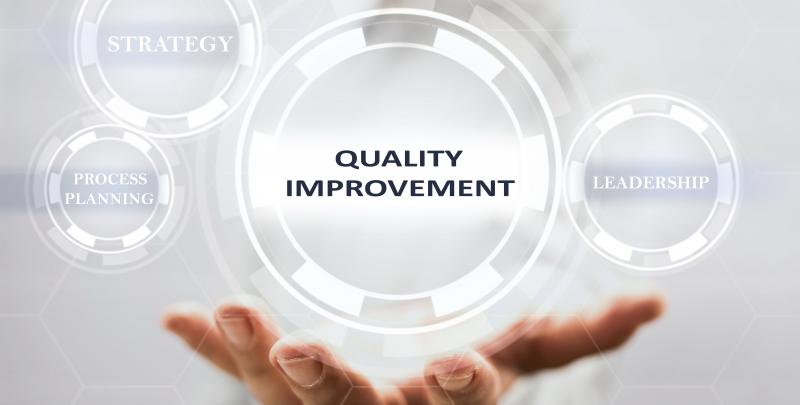I went to see a specialist couple of weeks ago. Talk about a new kind of office visit! As soon as I walked into the building, I was guided to a desk where my temperature was measured, and I was asked questions about COVID symptoms. After getting approved to continue with the visit, I was signed in and guided by a medical assistant (MA) to an examination room, where she collected my vitals and confirmed the reason for my visit. After the MA left, the provider texted me with an invitation to talk via video conference. I spoke to him for a couple of minutes and then he informed me that he was coming into the room to examine me. After a brief examination, he left the room and we reconvened via video conference. The actual in person time spent with me was 3 minutes, and the whole visit was approximately 15 minutes.
What does this have to do with quality improvement? My answer is – everything. This practice assessed their standard patient flow and improved the delivery care, during this time of rapid change. For the patients’ and provider’s safety, the office created an effective workflow minimizing in-person encounters by adding an innovative use of video conferencing during the visit. The process felt like a well-oiled machine, efficient and yet still patient oriented even though it was implemented quickly during the pandemic. And that’s what quality improvement is all about, improving, optimizing performance and reducing waste.
Healthcare providers are facing lots of changes and challenges nowadays. The pandemic has changed the way practices deliver care. New innovative solutions and technologies are introduced at a fast pace. Telehealth will soon be part of standard care, and patients are expecting to be offered virtual visits as options in lieu of in-person visits. Shifting toward a value-based payment model has brought up the importance of quality, efficiency and effectiveness. Collecting and analyzing data has become part of most practices’ daily life. The way patients think about their care has changed. Coordinated care and alternative access are expected.
Adapting to the fast changes, while maintaining patient volumes, and delivering high quality care without losing efficiency or money, requires a solid, continually improving system.
Consider quality improvement as the system and framework guiding you through the changes.
If you are new to quality improvement activities, or need a refresher, we are offering Facilitating Quality Improvement (FQI) training modules to get you started. In this training you will learn and develop the basic skills needed to facilitate quality improvement in your organization, including:
- Understand how quality improvement fits into the healthcare landscape.
- Explain the role of the practice facilitator in practice transformation.
- Understand the six components of QI.
- Identify strategies to address change challenges.
- Practice use of quality improvement tools to map workflows.
- Practice gap analysis and root cause analysis tools in problem solving.
- Demonstrate the importance of using small tests of change in the improvement process.
- Identify the different types of data used in practice transformation.
- Practice data verification skills for facilitators.
- Identify strategies for moving through resistance as facilitators and teams.
You have the option to choose from live or online training. Live trainings are delivered via a video conference platform, facilitated by an engaging HealthTeamWorks trainer. Online trainings are courses taken on your own schedule.
For more information send us an email to solutions@healthteamworks.org
To register to the online training: https://www.healthteamworks.org/content/facilitating-quality-improvement
Let’s get your quality improvement activities going!
Written by Hanna Moffett, Project Manager, HealthTeamWorks









